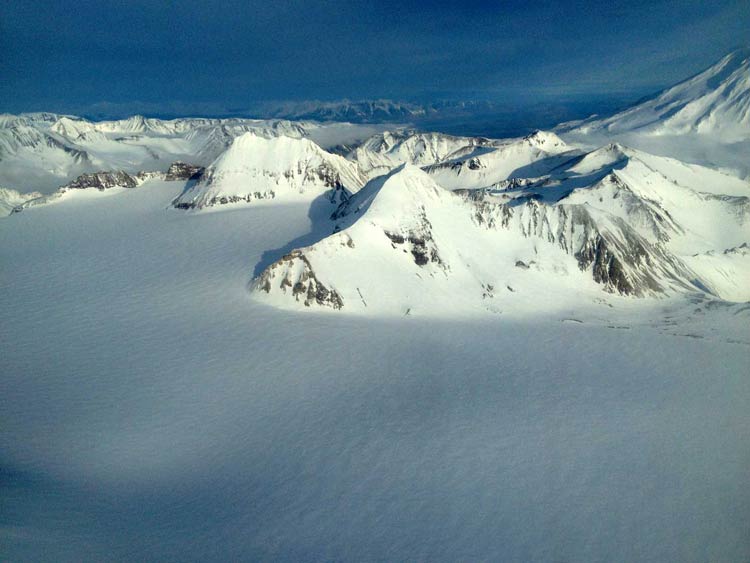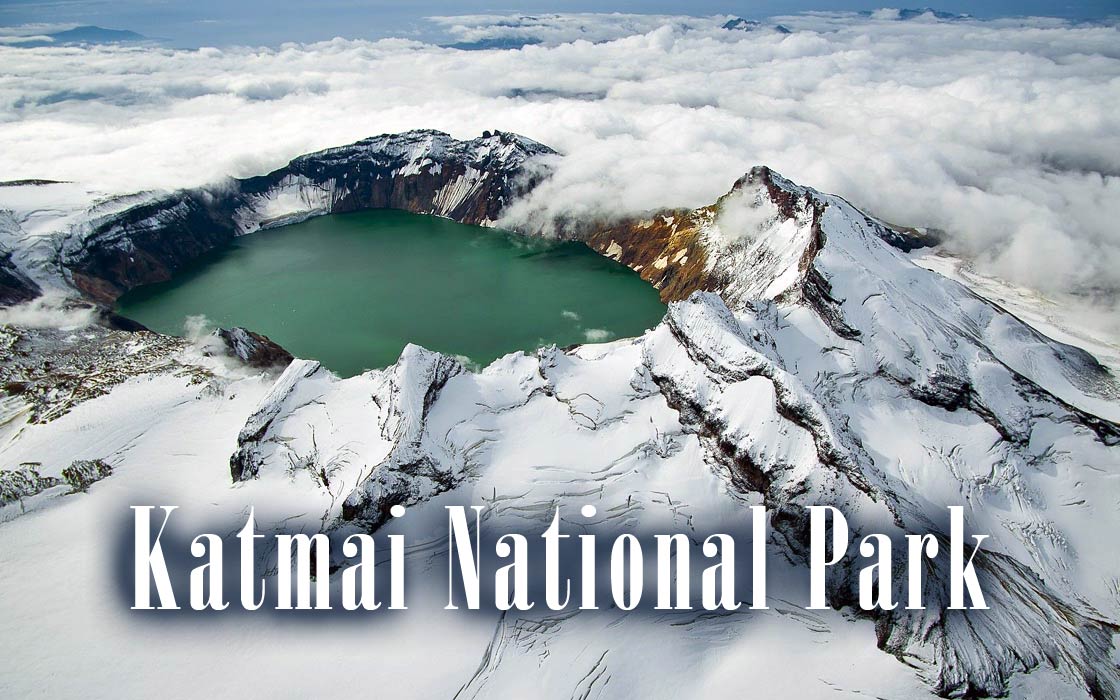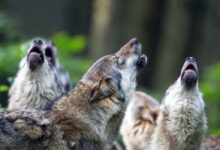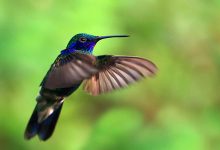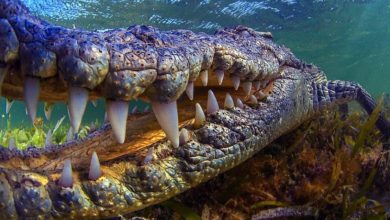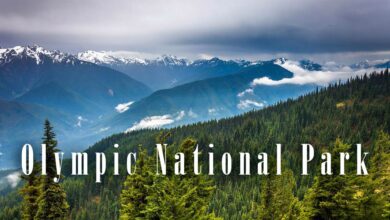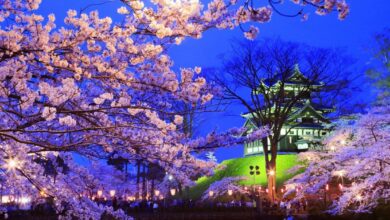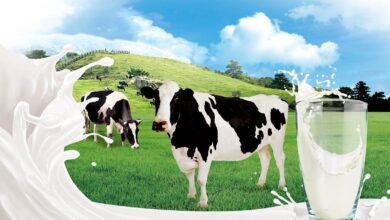Discovering Katmai: The Geologic and Wildlife Treasures of Alaska
We are accustomed to national parks primarily protecting well-preserved, unique, rare, and valuable ecosystems. However, there are few places in the world where areas that have formed relatively recently are under protection. Yet, in remote Alaska, there exists such a place. It is a unique national park, whose main attractions are volcanoes.
Katmai National Park was originally established as a natural monument to protect the remnants of the massive eruption of Novarupta Volcano in 1912, which created an area known as the Valley of Ten Thousand Smokes. It is one of the best preserved volcanic eruption landscapes in the world. There are currently 18 volcanoes in the park. The park is named after Mount Katmai, the highest peak in the park.
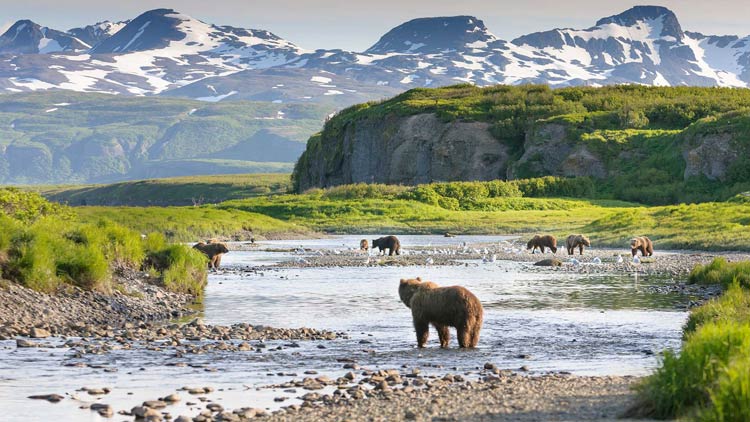
Location and geography
Katmai National Park is located in southern Alaska, along the Shelichow Strait separating Kodiak Island from the mainland. It occupies an area classified as part of what is known as the Ring of Fire, an area of increased seismic and volcanic activity extending along the mainland and archipelagos around almost the entire Pacific Ocean. The largest town near the park is King Salmon with a population of 374.
Alaska sits just above the junction of the oceanic Pacific Plate and the continental North American Plate. The oceanic plate sinks beneath the bottom of the continental one, simultaneously melting and releasing large amounts of magma and gases. Their outlets are volcanoes, of which there are more than a hundred throughout Alaska – of which as many as 40 were active in historic times! Within Katmai alone, there are seven still active volcanoes, which are constantly monitored by specialists.

History
On June 1, 1912, fishermen fishing in waters near the site of the current park sensed a series of tremors. Five days later, a volcano smaller than it – Novarupta – exploded on the slope of Mount Katmai. The eruption sent a huge amount of magma, ash and gases into the air. It is estimated that the magma itself had a volume of more than 12 km³ (2.9 cubic miles), while the volcanic ash had a volume of as much as 25 km³ (6 cubic miles). Over the next three days, the volcano erupted several more times, with the result that life almost ceased to exist within a radius of several hundred kilometers.
On June 9, the volcano finally calmed down, but dramatically changed the landscape of the area. Nearly 100 square kilometers (38 square miles) of land around Mount Katmai was buried under a layer of ash that was 200 meters (656 feet) thick in places. Cracks appeared in this layer over time, through which gases and heated steam escaped. The menacing spectacle led to the eruption site being named the Valley of Ten Thousand Smokes. The summit of Mount Katmai collapsed, forming a crater 3 km (1.9 miles) in diameter and 300 meters (984 feet) deep, at the bottom of which is a lake. It took almost 10 years before the area around the volcano was again inhabited by plants and animals, and nature regained its earlier appearance.

After many years, the sediments from the eruption cooled and hardened, forming the volcanic tuff that gave the area its current appearance. To this day, the vegetation here is sparse, with most of the park just covered by bare tuff in many shades of brown, red and yellow. This rock is relatively soft, which is why the Valley of Ten Thousand Smokes is now cut through by canyons as deep as 30 meters (98 ft), through which mountain streams flow. The Valley is only a small part of the park, but it is the park’s biggest tourist attraction.
The Valley itself, as well as the area around it, was protected as an inanimate nature monument as early as 1931. In the following years, the area around the Valley became an object of interest for scholars and travelers, who began to pay attention to the uniqueness of the place. Therefore, human activities gradually began to be restricted and even made it difficult to get into the area. Finally, in 1978, a project to create a national park was submitted. Work on this took two years – during this time a strict protection zone was designated, as well as a second, smaller zone, where more tourist activity was envisaged.

Climate
Katmai National Park lies in a subpolar climate zone. Summers here are short and cool, while winters are long and cold. Temperatures above 10°C (50°F) prevail for 1-3 months a year. The average temperature in July is 17°C (63°F), and in January it is -20°C (-4°F). Annual precipitation is highest on the coasts, reaching up to 1,500 mm (59 inches), while further west it is lower.
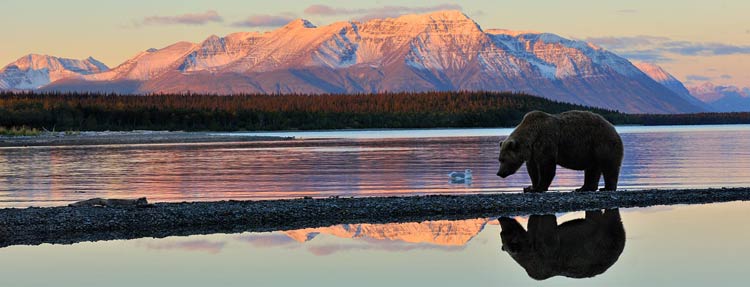
Fauna
Katmai is home to 29 species of mammals and 137 species of birds. The waters of the park are inhabited by 24 species of freshwater fish and 4 species of anadromous fish. Mammals found in Katmai include the American hare (Lepus americanus), the Canadian wolf (Canis lupus occidentalis), the grizzly bear (Ursus arctos horribilis), the coyote (Canis latrans), the beaver (Castor canadensis), the otter (Lontra canadensis), the weasel (Mustela spp.), the lynx (Lynx canadensis), and the wolverine (Gulo gulo).
In winter, caribou (Rangifer tarandus) can also be seen. Along the coast, marine animals such as the sea lion (Eumetopias jubatus), the harbor seal (Phoca vitulina), and the sea otter (Enhydra lutris) are found. The surrounding marine waters are inhabited by belugas (Delphinapterus leucas), orcas (Orcinus orca), and gray whales (Eschrichtius robustus). The most important fish in Katmai is the sockeye salmon (Oncorhynchus nerka), a member of the salmon family that serves as a crucial food source for many predators in the park. These fish enter the Naknek River and its numerous tributaries in June and July and leave from August to October.
The most significant animal in the park is considered to be the grizzly bear (Ursus arctos horribilis). Katmai is home to the world’s largest protected population of brown bears, with over 2,200 individuals. Bears fishing in the rivers for salmon swimming upstream are a major tourist attraction, and the majority of photos depicting bears fishing are taken in this area.

Tourism
The town of King Salmon is located approximately 8 km (5 miles) from the entrance to Katmai National Park, situated on the shore of Naknek Lake. The entrance is located near the dock for the ferry that crosses the lake, which is the only way to access Katmai. After crossing the lake to the Brooks Camp, visitors can continue their journey along a paved road leading to a viewpoint overlooking the Valley of Ten Thousand Smokes. Today, the valley is sparsely vegetated and inhabited by few animals, giving it an unnaturally quiet atmosphere. This silence is considered one of the most intriguing features of the valley.
Most of the park follows the typical regulations for such protected areas. However, in a small area covering approximately 1,587 hectares (about 3,920 acres), activities like hunting are permitted—of course, with the proper permits and under strict supervision. This measure is necessitated by the need to cull a certain number of brown bears (Ursus arctos) living in the area while also helping to control poaching. In this designated area, various sports are also allowed, including hiking, fishing, and kayaking; survival camps are also organized here.
The main attraction of Katmai is the area known as Brooks Camp, which offers the best opportunities for wildlife observation, particularly for watching bears fishing for salmon. Visitors must strictly adhere to park regulations, which are diligently enforced by park rangers. It is crucial to exercise utmost caution and avoid approaching bears. There is a strict prohibition against feeding animals, especially with human food, to prevent encouraging them to come closer. The bears in the park are generally less fearful of humans than those in other areas, so they may approach quite closely on their own.
Brooks Camp also features an archaeological site with evidence of human settlement dating back approximately 7,000 years.
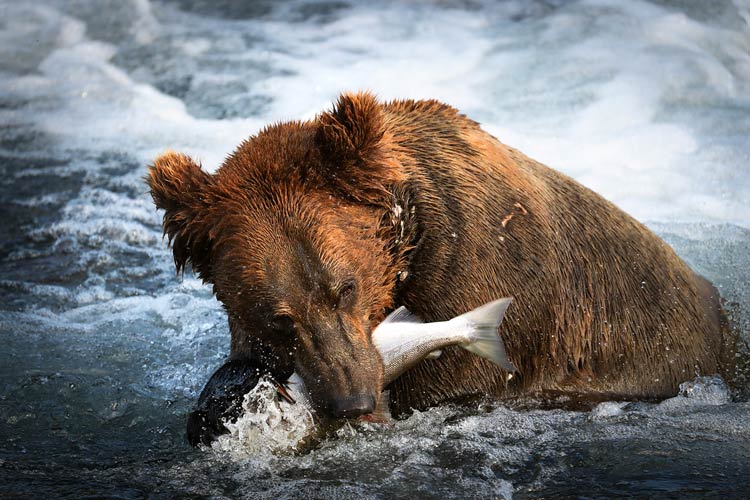
Threats
Katmai National Park is one of the few in the world where man poses no particular threat to nature. This is influenced by the fact that it is a secluded place that is difficult to get to, so tourists who come there are generally well-prepared and disciplined. In addition, a huge part of the park is completely inaccessible to the public. Due to its remoteness from major urban centers, the harmful effects of pollution are also not noted.
The only major event in the park’s history was the Exxon Valdez oil tanker disaster in Prince William’s Bay, as some of the oil spilled at the time made its way to Katmai’s shores – they were contaminated for as much as 90% of their length. As many as 8,400 dead birds were counted at the time. After about a year of intensive work, it was possible to remove the remaining oil.
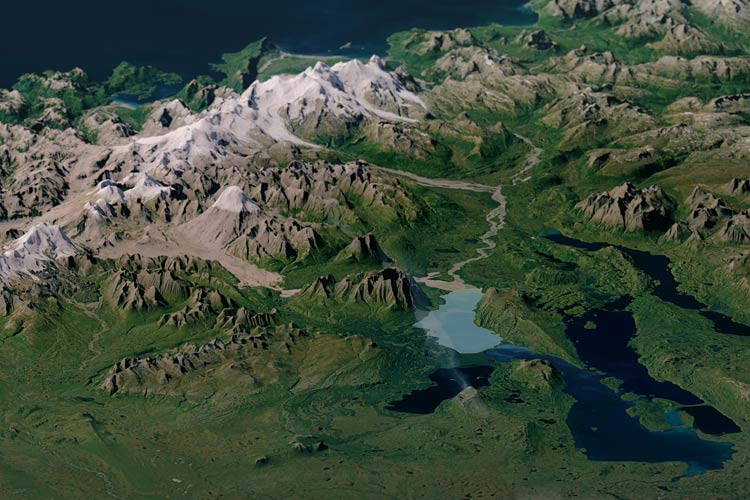
Detailed Information
- Name: Katmai National Park and Preserve
- Established: December 2, 1980
- Area: 16,564 km² (6,383 square miles)
- Highest Peak: Mount Katmai (2,047 meters above sea level / 6,716 feet)
- Number of Visitors: 37,818 (in 2015)
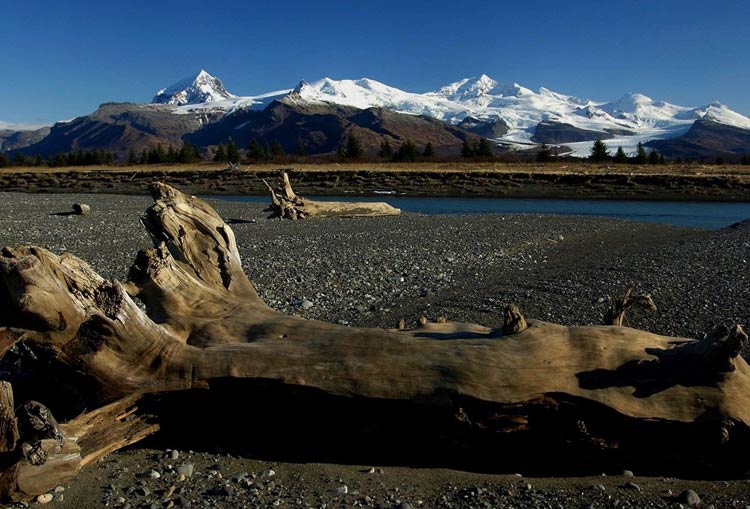
Interesting facts
- Almost every year, one of the volcanoes in Katmai National Park erupts. However, these eruptions are generally weak and do not significantly impact the surrounding area.
- According to eyewitness accounts, the amount of ash from the 1912 eruption was so immense that on Kodiak Island, located 150 km (93 miles) from the volcano, it was still impossible to see the flame of an oil lamp from a meter (3 feet) away the following day.
- Volcanic Activity: Katmai National Park is known for its volcanic activity, with several of its volcanoes erupting nearly every year. The park’s most famous eruption occurred in 1912, when the Novarupta volcano erupted violently, creating the Valley of Ten Thousand Smokes.
- Sockeye Salmon: The park is a critical habitat for sockeye salmon (Oncorhynchus nerka). These fish migrate to the rivers of Katmai each summer to spawn, providing a vital food source for the park’s wildlife, especially the grizzly bears.
- Brown Bear Sanctuary: Katmai is home to the largest population of brown bears (Ursus arctos) in the world, with over 2,200 individuals. The bears are particularly known for their impressive fishing skills, and Brooks Camp is a prime location for viewing their fishing activities.
- Diverse Wildlife: In addition to grizzly bears, the park hosts a variety of other wildlife, including caribou (Rangifer tarandus), moose (Alces alces), wolves (Canis lupus), and lynx (Lynx canadensis). The park also provides habitat for marine mammals like sea otters (Enhydra lutris) and harbor seals (Phoca vitulina).
- Archaeological Significance: The park contains significant archaeological sites, including evidence of human settlement dating back around 7,000 years. These sites provide valuable insights into the lives of the indigenous peoples who once lived in the region.
- Valley of Ten Thousand Smokes: The Valley of Ten Thousand Smokes, created by the 1912 eruption, is a unique landscape characterized by its volcanic ash deposits. The valley’s name reflects the numerous fumaroles and steam vents that were visible in the aftermath of the eruption.
